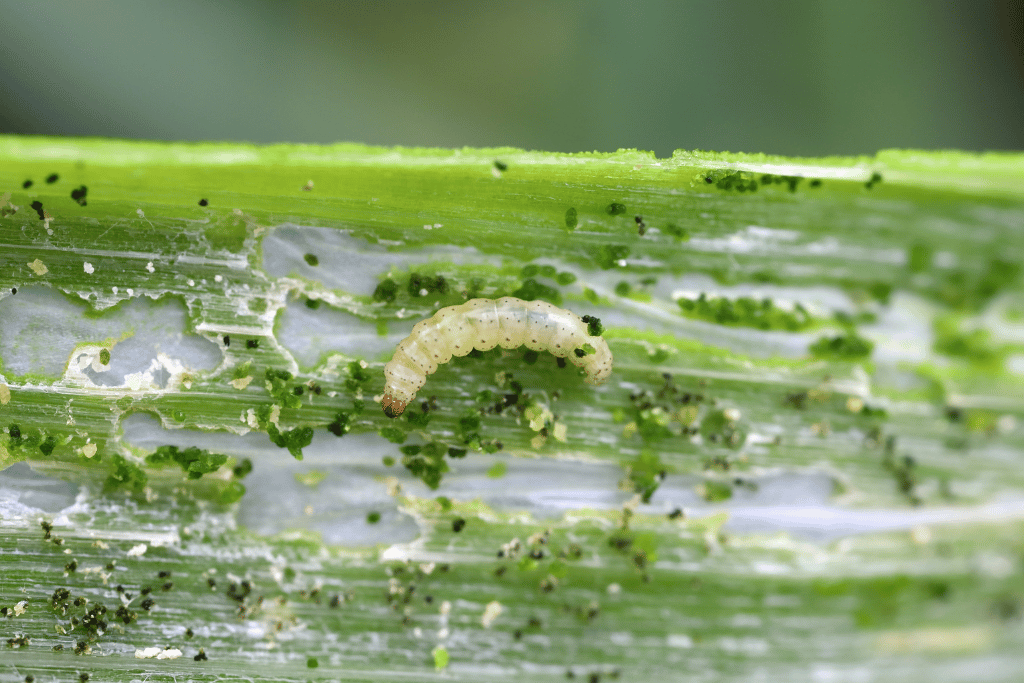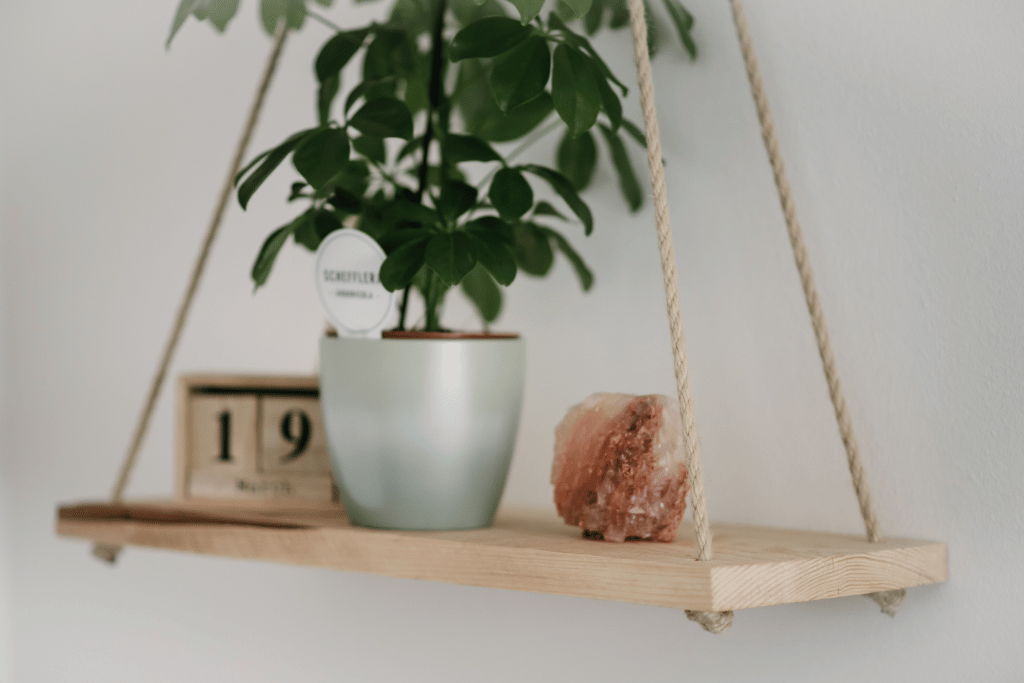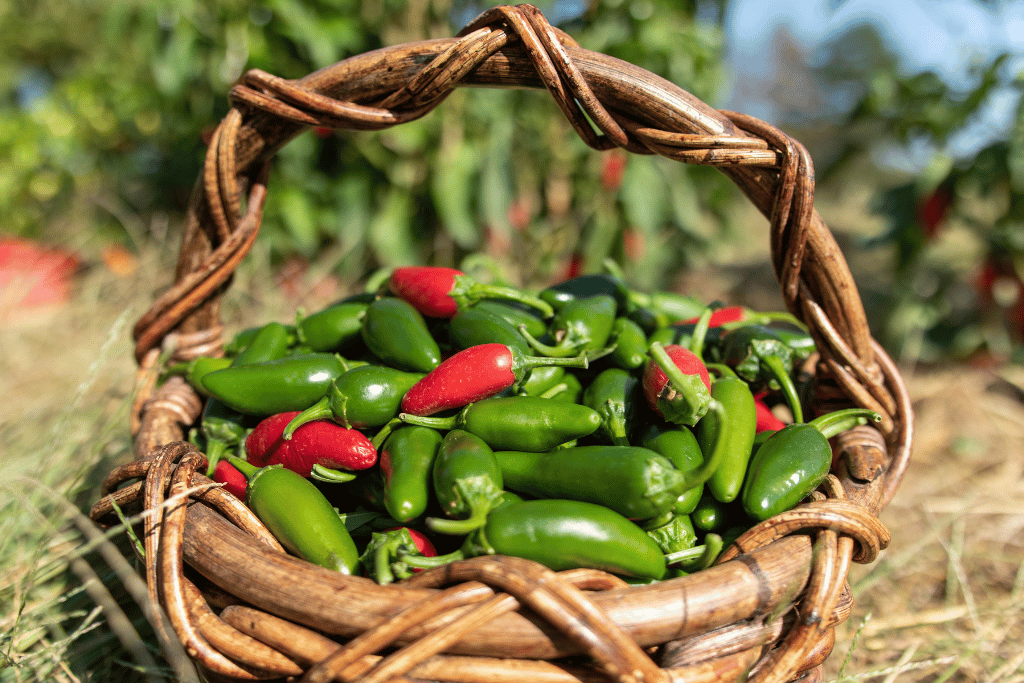
Hailing from Mexico, Jalapenos have become a favorite worldwide for its ability to be blended into many different cooking styles and traditions. It gets its name from Xalapa, Veracruz, the town and region in Mexico where it’s heavily produced.
Jalapenos are the most well-known and widely consumed hot peppers, even where I live in the Northeast.
Their popularity may be due to their outstandingly smooth, sometimes sweet flavor. Or it could be that they pack a piquant punch without being TOO spicy.
Their ease of growth and prolific production are other reasons for their prevalence at the grocery store and farmer’s markets.
I know when I’ve grown jalapenos in the past, by the fall season they’re bursting with fruits, a fireworks display of light green, dark green and red peppers. What a beautiful sight to see, spicy fall foliage right in your own garden.
So we see there are plenty of practical reasons to cultivate this popular pepper. But when the big payoff rolls around and your plant is full of fruit, the question begs:
When is the best time to pick jalapenos?
Of course, the answer is a little more complex than counting down days or a specific shade of color to look for. And although there may not be one definitive right answer, it’s still simple to explain and put into practice.
Join me as we briefly explore the ripening stages of a jalapeno pepper, how each stage matches your taste and when to pick it based on those factors.
How Do I Know When to Pick My Jalapenos?
The fact of the matter is almost all peppers can be harvested at any stage of growth. But it’s ideal to let your jalapenos reach a certain degree of ripeness to maximize your time and effort while letting the nutrients and flavor concentrate in the fruit.
If you’re itching to pick some peppers, make sure your jalapenos at least check these boxes.
- Jalapenos should be anywhere from 3-5 inches long.
- Peppers should have thick walls and feel firm.
- The pepper plants themselves should be 5-6 months old. Maturity typically falls in the range of 60-90 days after transplanting them into the garden.
- Pepper color depends on their age and how long they’ve been allowed to ripen. They’re fine being picked once they reach a deep, dark green color. From then until they turn red is a moving target, based on your desired flavor and degree of heat.
Degrees of Jalapeno Ripeness
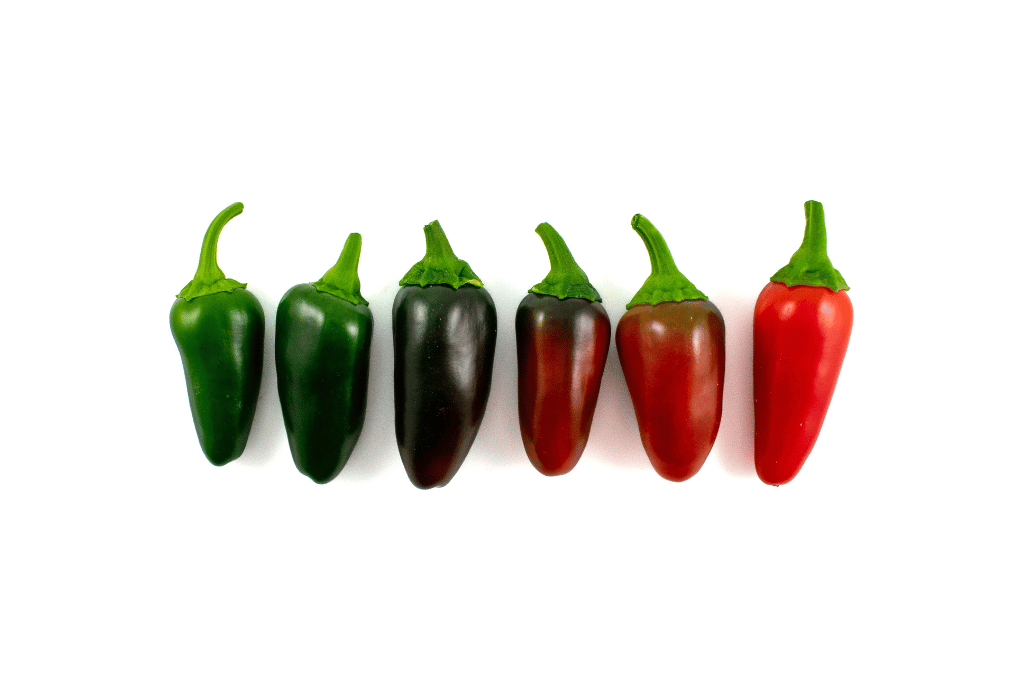
At the end of the day, the color of the peppers will tell you most of what you need to know as far as ripeness is concerned.
External factors like weather, temperature, plant health, among other factors can alter the timing of maturity. But your eyes won’t lie as you watch your jalapenos progress from light green, turning much darker, almost to a deep purple or black and finally to red.
Jalapenos are usually picked at a dark green stage. There may be a couple of reasons for this.
In this state, the peppers aren’t overly ripe and will have a brighter, grassier flavor with lower Scoville Heat Units (SHU). This is the form of measuring the level of heat in peppers. Jalapenos range anywhere from 2,500-8,000 SHUs.
So green peppers may be more palatable for most folks. And as they are not entirely ripe, they tend to have firmer, tougher more resilient flesh. They will keep longer and hold up to shipping and handling in markets and stores.
The visual appeal and physical condition are big selling points for produce. A red jalapeno is more likely to shrivel and go bad, resulting in a less desirable product to buy, sell and consume.
But for the purpose of home growers, picking red jalapenos works just fine. Especially if you like them on the hot side. The interesting thing about these peppers is that heat intensity goes up as they ripen but so too does their sweetness. So if you’re a fan of deep, sweet and spicy flavors, leave your peppers on until they turn red.
Colored Jalapeno Varieties
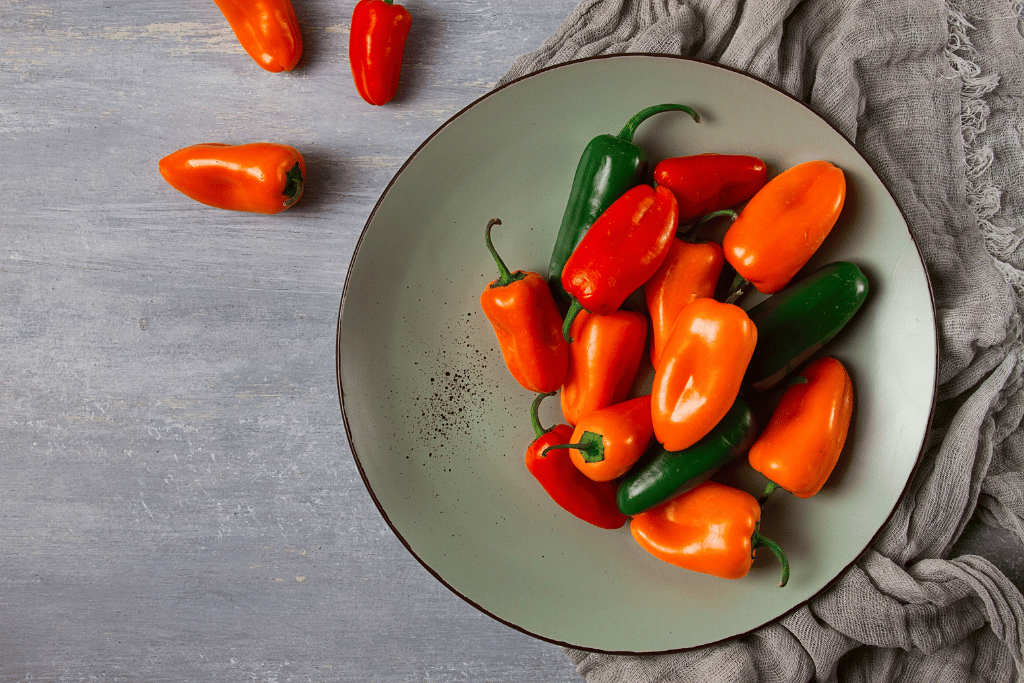
There are also other novel types of jalapenos like purple and orange jalapenos, which I would highly recommend if you like adding splashes of secondary colors to your meals. The differently colored pigments in the peppers will add diverse nutrients to your diet, and they look pretty too!
With these brightly colored varieties, the same general rules apply. Peppers will start green and turn dark, then slowly ripen to their designated color. Try planting different colored types so you can whip up vibrant batches of salsa during the summer and fall harvest time.
Corking
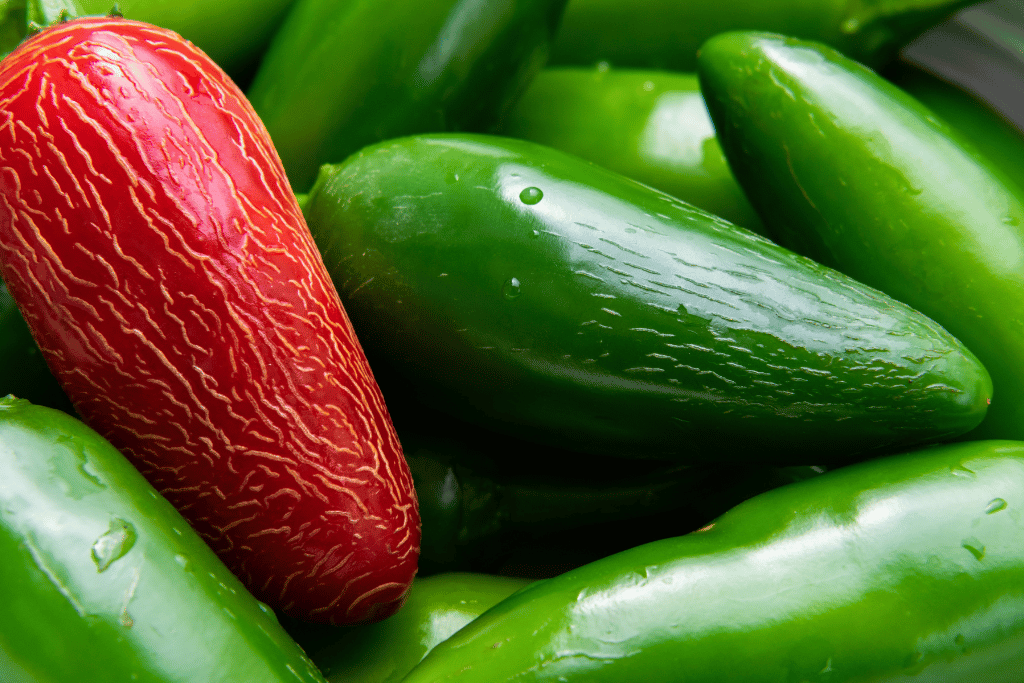
One last surefire sign that your jalapenos are ripe is the development of fine white or light brown lines on the surface of the skin. This natural occurrence is called corking.
Corking is actually a desirable trait pepper connoisseurs claim, and jalapenos with the patterning are totally safe to eat. It’s an undeniable mark of ripeness in a pepper. So go ahead, pick it off!
Jalapeno Ripeness Summed Up
To sum up the stages of jalapeno ripeness, you should be ready to pick them as soon as they reach a dark green color. If you prefer a spicier, sweeter red fruit, feel free to wait.
But keep in mind the earlier you start picking peppers, the more the plant will be encouraged to produce. Once the fruit is popped off the plant, it can focus its energy on setting more blossoms and producing more peppers.
A good strategy would be to pick off the majority of the peppers once they reach a ripe, dark green, making way for a new batch. Leave a handful on to age and develop more complex colors and flavors. You’ll be treated to the best of both worlds. A substantial yield of early, fresh-tasting peppers and a later harvest of deep, intensely flavored firecrackers.
Check out this article for Peppers that grows upwards.
How to Pick Jalapeno Peppers
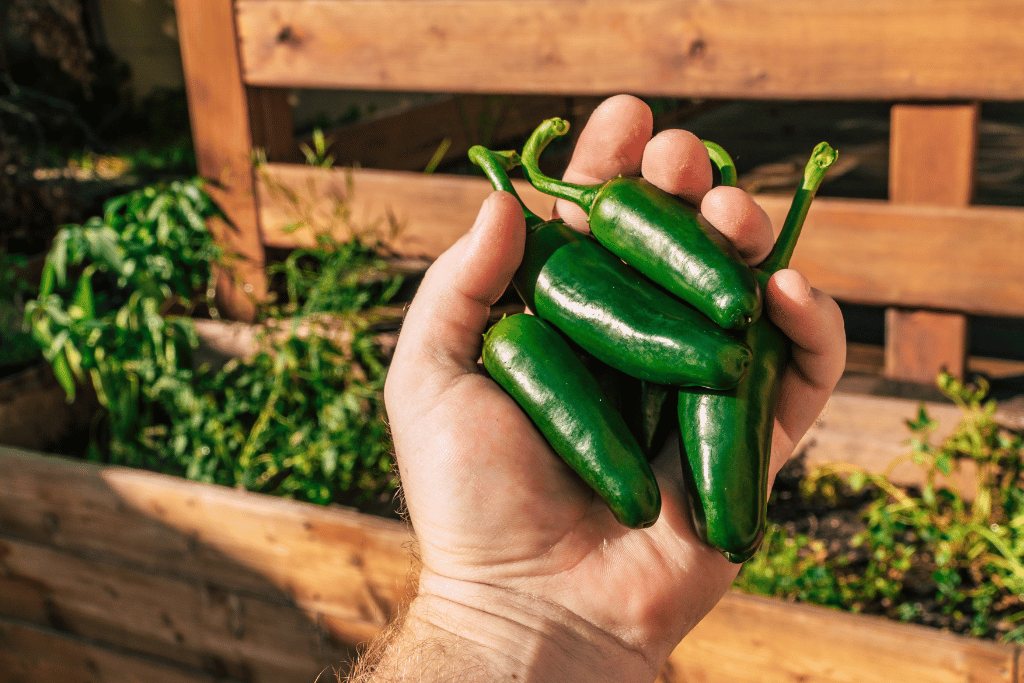
Now that we know exactly what to look for when determining harvest time, let’s discuss best picking practices. You’re going to want to pick properly to protect your plant from damage and ensure that it continues to produce long into the season.
- Find all the ripe peppers and prepare to pick them off. Leave a few if you’d like to let them mature further. If the pepper is too small or has a light green shade, let it hang out on the plant until it’s time.
- Gently grasp the branch just below the area you’re picking the pepper. The extremities of pepper plants tend to be fragile. Whole branches, including immature fruit, flowers and foliage, are easily snapped right off if you yank. (I’ve been there, trust me.)
- Now, believe it or not, fruit picking actually requires a bit of finesse. Don’t worry it’s not at all difficult to learn, and once you get the hang of it, it just clicks (literally!)
- The stem of the pepper hangs downward from the branch. Steadying the branch with one hand, take the pepper in the other and slowly turn it upward in the opposite direction that it’s hanging.
- The pepper should click or pop right off the branch. There should be a clean break at the point where the pepper’s stem meets the branch. And voila! The perfectly picked pepper. (This trick applies to picking many types of fruit. Instead of pulling, turn it against gravity and it pops right off.)
Top Tips for Picking Pecks of Jalapeno Peppers
By the late summer and early fall, you should have loads of fresh jalapenos ready to pick. Ensure you do by planting your peppers in a raised bed.
- When a frost threatens it’s time to pick off all your peppers, no matter the level of ripeness. The peppers will freeze and be left inedible by a frost.
- Once jalapenos begin to turn red on the plant, after being picked they will continue to ripen to that color.
- Pick ripe peppers frequently to encourage more flowering and fruiting. Early-picked peppers can be left out at room temperature to gradually ripen.
- The flavor of jalapenos gradually intensifies as it ripens from light green to deep, dark green on to bright red.
- Leave them on the plant longer for maximum color and taste, just be careful they don’t overripen and rot. If the flesh of the pepper starts to go soft, it should definitely get picked off.
- Never pull on the peppers. With a gentle turn, just the right way, they’ll click right off of the plant.
- The riper they get, the easier they’ll pop off. Use a fine pair of sterilized garden snips if they don’t come off easily.
- Jalapenos have a remarkable range of flavors and spice levels because they can be picked at multiple different stages. Experiment with picking at varying levels of ripeness to see what suits your taste best.
The Perks of Picking Jalapeno Pepper Plants
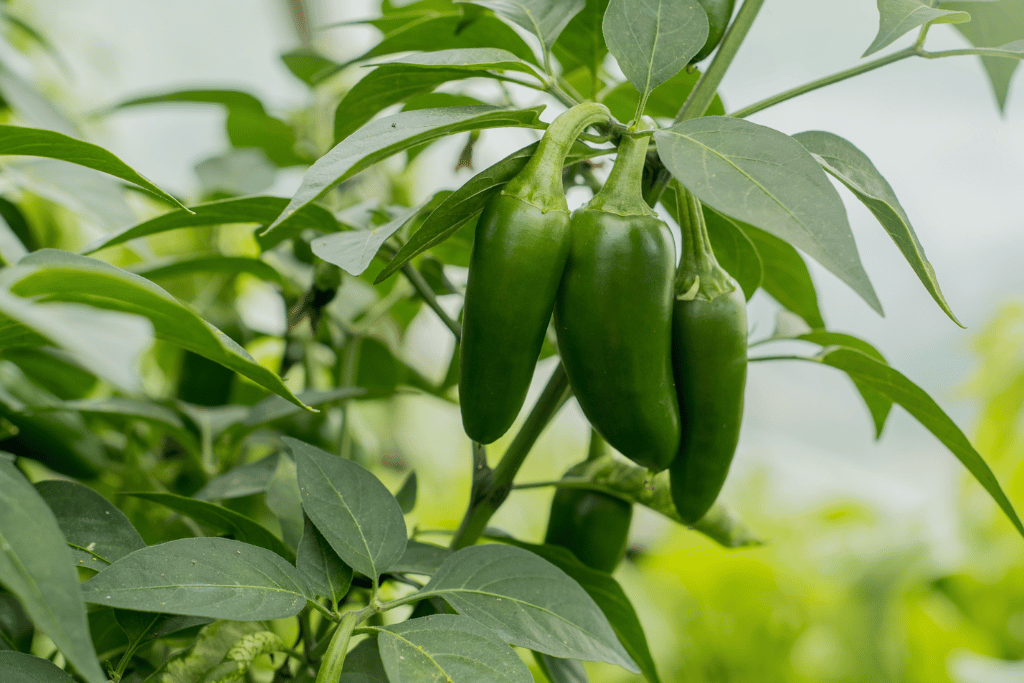
Use your imagination and there are no limits to the number of recipes where jalapenos would make the perfect addition.
To store your peppers pop them in the fridge for a week or two, freeze them for six months to a year or even dehydrate them and grind them down into your own crushed chile pepper seasoning.
However you decide to enjoy your crop, there’s no doubt that jalapenos are a tasty, versatile pepper; and picking them just might be the most fun part of the whole process!


